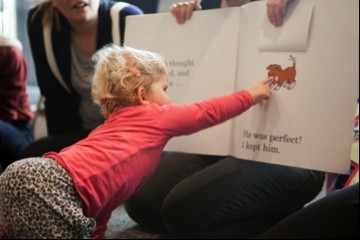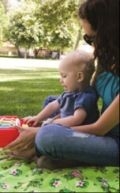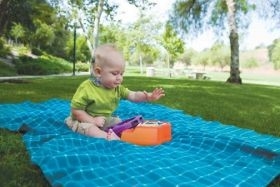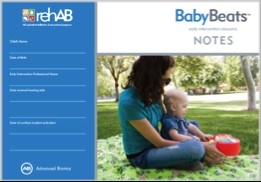
Baby Beats
An early intervention resource

A musical Journey of sound, music, and voice
Helping little ones learn to listen and communicate
It's never too early to start… BabyBeats™ early intervention resource!
As soon as your child has hearing aids – or is waiting for a cochlear implant
Available in Arabic, Danish, Dutch, English, French, German, Hindi, Indonesian, Italian, Traditional Chinese, Polish, Spanish
Movement and Music
Listen to short, repetitive pieces of music. Respond to differences in timbre (sounds), tempo, rhythm and pitch. Listen to the music for cues on how to move. Encourage your baby’s vocalizations in response to the music.
Exploring Animals
Listen to full, melodic pieces of music that are contrasted with animal sounds or silence. Help your child use their hearing to notice different patterns in the music. Encourage your child to imitate movements and words.
The BabyBeats™ early intervention resource provides a fun, motivating way to encourage your child’s communication both before and after using hearing aids or receiving cochlear implants. It is designed to be used with babies from three months to three years old.
The BabyBeats travel bag includes:
- BabyBeats parent guide
- BabyBeats Music CD
- Instrument
- Transportation and animal picture cards
Give your child the best start and make BabyBeats™ early intervention resource a part of your child’s life!
BabyBeats™ Early Intervention Resource and Beyond - from the Transportation Trail
to Early Reading
It is never too early to start reading!

References
Bonne R, Cunningham J. Children's expression of emotional meaning in music through expressive body movement. J Nonverbal Behav 2001;25: 21 -41.
Francois, C., & Schon, D. (2011). Musical expertise boosts implicit learning of both musical and linguistic structures. Cerebral Cortex (New York, N.Y.: 1991), 21(10), 2357-2365.
Papousek M. (1996) Intuitive parenting: a hidden source of musical stimulation in infancy. In: Deliege I, Sloboda J, eds. Musical Beginnings. Oxford, UK: Oxford University Press; 88 -112.
Patel, A.D. (2003). Language, music, syntax and the brain. Nature Neuroscience: 6(7):674-681.
Phillips-Silver J, Trainor L. (2005) Feeling the beat: Movement influences infant rhythm perception. Science; 308:1430.
Shenfield T, Trehub S, Nakata T. (2003) Maternal singing modulates infant arousal. Psychol Music; 31:365-375.
Trehub SE. (2003) The developmental origins of musicality. Nat Neurosci; 6:669-673.
Welch G. (2006) The musical development and education of young children. In: Spodel B, Saracho O, eds. Handbook of Research on the Education of Young Children. Mahwah, NJ: Lawrence Erlbaum Associates Inc.; 251-267.


